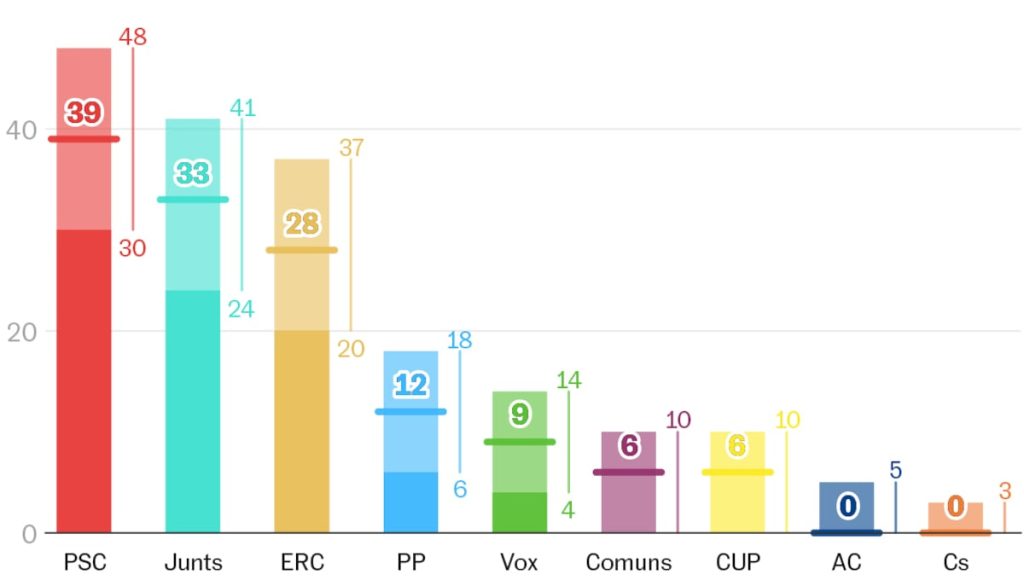In this article, Kiko Llaneras discusses the current political landscape in Catalonia based on polling data. The average of surveys places the PSC as the leading party with around 28% of votes, followed by Junts, ERC, PP, Vox, Comuns Podem, CUP, and a new far-right and pro-independence party, Alianza Catalana. Junts is seeing a significant increase in support, while Comuns Sumar has experienced a slight decrease in popularity in the six weeks leading up to the election.
Llaneras provides an estimation of seats based on this polling data, with the PSC projected to win 39 median seats, followed by Junts, ERC, PP, Vox, Comuns Sumar, and CUP. Alianza Catalana also has a chance to secure representation, while Ciudadanos is unlikely to win any seats. The predictions are made using a statistical model that takes into account historical polling accuracy and information from previous elections.
The key question is which party or coalition will be able to secure a majority in the Catalan Parliament. The analysis shows that a hypothetical agreement between Junts, ERC, and CUP may fall short of the 68 seats needed for a majority. The PSC holds the key to potential coalitions, with a possible alliance with ERC seen as the most likely path to reaching the majority of seats. However, the possibility of a left-wing coalition with PSC and Comuns Sumar also remains a viable option.
The uncertainty of the election results is highlighted by the wide range of seat predictions for each party. For example, while the PSC is most likely to win around 39 seats, the actual range of probability extends from 23 to 42 seats. The model allows for different scenarios to be analyzed, such as the likelihood of a left-wing coalition versus an independentist agreement between ERC and Junts.
In conclusion, the upcoming Catalan elections present two main scenarios: a left-wing coalition between PSC and ERC as the only simple solution to reaching a majority, or the potential for ERC to choose between a left-wing alliance or pursuing an agreement with Junts for an independentist coalition. The methodology used for seat predictions includes a multi-step process that takes into account polling averages, historical accuracy, and simulation of election outcomes. Readers are encouraged to subscribe to Kiko Llaneras’ newsletter for more in-depth analysis and insights into upcoming elections.















